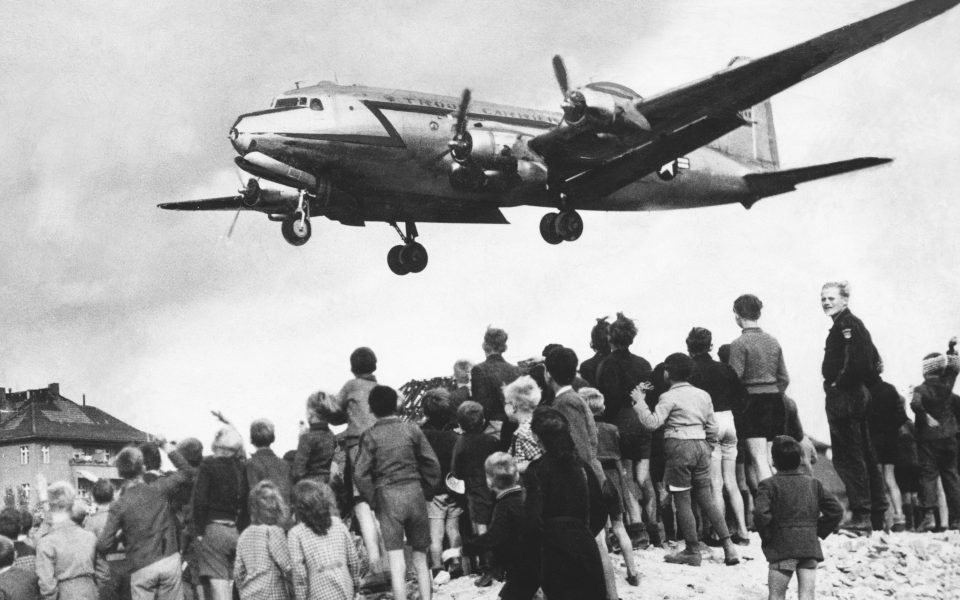Eager to shift narrative, Biden team puts airlift in historical context

When President Joe Biden briefly referred to the Berlin airlift – the operation 73 years ago to feed a city whose access had been choked off by the Soviet Union – in describing the United States’ evacuation efforts in Afghanistan, he was revealing the inspiration for a broader plan to redeem his messy exit.
After 10 days of missed signals, desperate crowds and violence around Hamid Karzai International Airport in Kabul, Biden and his team are eager to shift the narrative about the chaotic end of America’s longest war.
They have seized on the evacuation of tens of thousands of Americans and Afghans from Kabul as the public relations answer. Jake Sullivan, the president’s national security adviser, said Monday that the scores of rescue flights the United States was initiating each day was likely to be regarded as “one of the largest airlifts in history.”
“This is an enormous, logistical, diplomatic, security, humanitarian undertaking,” he said. “There is no other country in the world who could pull something like this off – bar none.”
As of Tuesday evening, Biden said that 12,000 people were evacuated from Kabul during the previous 12 hours, the result of 19 military flights and 31 coalition flights. That brings the total number evacuated since the end of July to 75,900 people, the president said – well beyond the upper limits of what the Pentagon said was possible only days earlier.
Whether that pace can keep up is unclear – much depends on getting those with the right passports or visas to Kabul and through the airport gates, amid reports of beatings and long waits in the city’s brutal sun. But in interviews, senior aides indicated that they saw a chance of bringing some order to the chaos – and with it, a sense that they were regaining some modest control over a government collapse in Kabul they did not see coming until it was already underway.
In the past several days, top administration officials have seized on the airlift as the heart of what they hope is a better story to tell: tens of thousands of people evacuated from Kabul safely, with no fatalities among US troops. They are sending multiple updates to reporters each day showing that the pace of people being flown to safety is accelerating.
In private conversations and in public statements, officials – including the president himself – have suggested that the evacuation of American citizens and Afghan allies is likely to rank among the most ambitious such efforts ever. Their hope is that if the history books mark this moment, it will be as evidence of order and operational competence.
On Friday, Biden described the evacuation as “one of the largest, most difficult airlifts in history,” saying the United States is “the only country in the world capable of projecting this much power on the far side of the world with this degree of precision.”
By comparison, the undertaking in Kabul does not exactly resemble the Berlin airlift, in which food was flown into West Berlin, rather than people being flown out.
But as a model for humanitarian and political recovery, the rescue operation – which happened when Biden was just a child – is not a bad one. The city of Berlin had been divided between the West and the East since the end of World War II and tensions were growing. When the Soviet Union blocked food, electricity and other resources from reaching West Berlin by land, the United States and Britain took to the skies to carry in material by plane.
The two countries managed to get just shy of 300,000 flights into Berlin over 11 months, from June 24, 1948 to May 11, 1949, and the State Department’s record notes that “at the height of the campaign, one plane landed every 45 seconds at Tempelhof Airport,” until recently Berlin’s main air hub.
Harry S. Truman, the president who directed the now-famous airlift, was reelected in its midst, though not by much – something that Biden must have noticed. But history has been kind, describing the Cold War-era airlift as one of the greatest emergency humanitarian efforts. It helps that the Soviet Union ultimately collapsed, 40 years after the airlift ended, and Germany became both unified and free.
Biden mentioned the Berlin airlift on Sunday to explain his decision to make use of the Civil Reserve Air Fleet, which was created after the Berlin crisis to make sure that commercial planes could be used in times of emergency. It has been invoked only rarely, mostly to move troops to the Persian Gulf. But this is a very different kind of mission.
“The comparison is largely right,” said Michael Beschloss, the presidential historian, who wrote about the 20th-century effort in his book “The Conquerors.”
“In both the Berlin airlift and the effort to bring refugees out of Afghanistan, American humanitarian values and impulses are on big display for the rest of the world,” Beschloss said. “The difference between the two is that in 1948, we were flying food and other supplies to Berliners who were endangered by the Soviets to show that America would keep its promise to guarantee freedom in Berlin.”
The Berlin airlift is not the only historical analogy possible. In terms of the number of people evacuated, the bid by Biden’s administration is likely to exceed many other efforts throughout the 20th century.
In the 1960s, after chaos erupted in Congo after it won its independence from Belgium, the US Air Force helped move 63,899 passengers and 18,806 tons of cargo to deploy United Nations forces, shuttling troops, refugees and other resources to and from scores of nations.
After the government of the Dominican Republic was overthrown by the military in 1963, President Lyndon B. Johnson ordered an evacuation of Americans and other foreign citizens from the capital. Operation Power Pack moved 12,000 passengers and 17,250 tons of cargo within five days.
When the South Vietnamese government in Saigon fell in 1975, the US military used Operation Frequent Wind to evacuate the Americans and at-risk Vietnamese, flying more than 7,000 people by helicopter from the US Embassy and other locations. The searing images of the rapid departure in the face of danger would prove to be some of the most memorable of the long war.
[This article originally appeared in The New York Times.]






